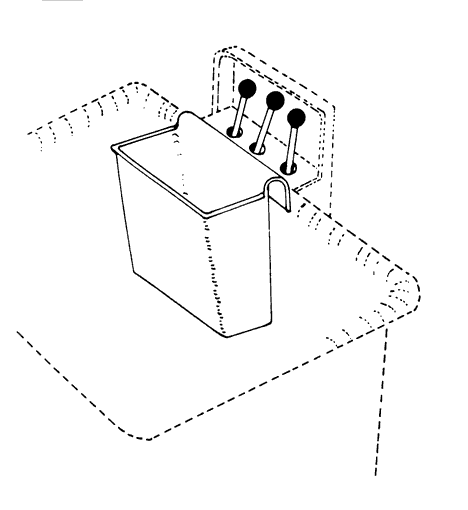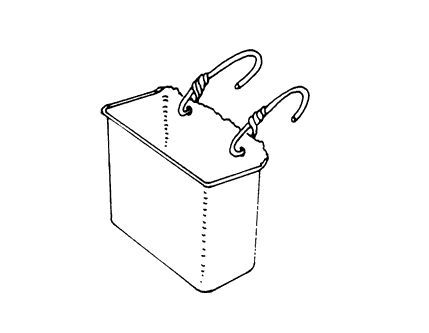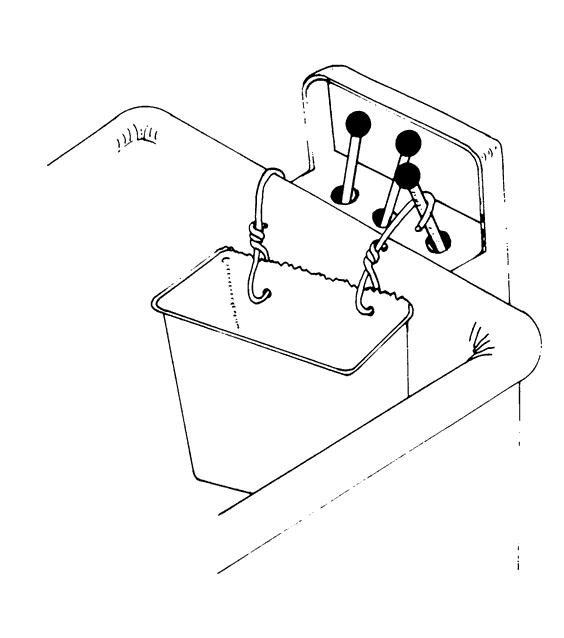Electrical Lineman Electrocuted by Contact with Energized Powerline in Puerto Rico
FACE 90-06
SUMMARY
A journeyman lineman working to restore electrical power in the wake of Hurricane Hugo was electrocuted when the boom and bucket of the bucket truck in which he was working rotated into an energized 4800-volt powerline. Just prior to the incident, the lineman noticed that a plastic tool basket, mounted on the side of the bucket with copper-wire hooks, was full of water. He removed the basket from the side of the bucket, and emptied it. When the lineman attempted to reinstall the tool basket in the dark, one of the hooks caught on the lever which controlled boom rotation, and engaged it, causing the boom to swing into the powerline. The victim’s body made contact with an energized 4800-volt powerline and a secondary fuse box. The jolt of the bucket striking the lines caused the victim to be thrown from the bucket to the ground 30 feet below. NIOSH investigators concluded that, in order to prevent similar incidents in the future, employers must ensure that:
- standard safe operating procedures, such as grounding bucket trucks and using insulated line hoses and blankets, are followed at all times
- portable lighting, which enables the worker to see the worksite clearly, is provided whenever employees are required to work in darkness
- comprehensive inspections of each worksite are conducted prior to the start of each job to identify potential hazards, including damaged equipment. Damaged equipment should then be removed from service.
INTRODUCTION
On September 28, 1989, a 30-year-old male lineman third class was electrocuted when the boom and bucket of the bucket truck in which he was working rotated into an energized powerline and a secondary fuse box.
Commonwealth officials notified DSR of this fatality and requested technical assistance. During the week of October 2-6, 1989, a DSR field team consisting of two occupational safety and health specialists, a safety engineer, and an epidemiologist conducted an investigation. Members of the DSR team met with the Commonwealth Epidemiologist and his staff, the Secretary of Health, representatives of the Medical Examiner’s office, and power company officials to obtain information concerning the circumstances surrounding this incident. Videotape and photographic documentation of storm damage to the electrical transmission and distribution system was taken. This investigation was one of five separate investigations (90-02 through 90-06) conducted by DSR staff. All five of the investigations involved workers who were electrocuted while restoring electrical power to the island of Puerto Rico as a result of damage caused by Hurricane Hugo (1).
The employer is a major utility company with more than 10,500 employees. The company has been in operation for the past 41 years. The company has a formal safety program with written policies and procedures for all routine operations. The corporate safety staff consists of a supervisor of industrial safety, six safety engineers, and seven safety advisors.
All workers receive periodic retraining and workers that perform work on electrical lines are certified in cardiopulmonary resuscitation (CPR).
INVESTIGATION
The victim, a third class (highest level) lineman with 6 years’ experience, was a member of an electric utility work crew that for 10 days prior to the incident had been working extremely long hours to restore electric service to an area devastated by a hurricane. On the day of the incident, the crew had been working since early morning. At approximately 8:30 p.m., the crew decided to restore power to one more area before quitting work for the night. The victim went up in a bucket truck to open a two-phase line on a transformer and install a jumper between that line and another two-phase line on a second transformer. As the victim prepared to start work in the bucket, he noticed that a plastic tool basket mounted on the side of the bucket was full of water. The mounting bracket for this basket had broken and had been replaced with two copper wire hooks which slipped over the edge of the bucket to hold the basket in place (Figures 1 and 2).
The victim removed the plastic basket from the bucket to empty the accumulated rainwater. When he attempted to reinstall the basket in the darkness, one of the copper hooks became caught on one of the three bucket-mounted control levers (Figure 3). This lever controlled the horizontal rotation of the boom. The weight of the tool basket engaged the control lever and caused the boom to begin to move toward the powerlines. (Had the original mounting bracket been in place, the basket could not have engaged the control lever.) The victim tried in the darkness to manipulate the controls and stop the rotation. A ground crew worker, who observed the bucket moving toward the powerlines, attempted to reach the master control panel on the truck, but slipped and fell before reaching the controls. The victim made contact with an energized 4800-volt powerline and a secondary fuse box. The bucket hit the line with such a jolt that the victim was thrown from the bucket to the ground approximately 30 feet below.
Co-workers administered cardiopulmonary resuscitation (CPR) to the victim and transported him to a local hospital where he was pronounced dead. The victim had second and third degree burns on his abdomen and right thigh.
CAUSE OF DEATH:
The Medical Examiner listed the cause of death as accidental electrocution.
RECOMMENDATIONS/DISCUSSION
Recommendation #1: Employers must insure that existing company safety procedures are followed at all times.
Discussion: Company standard operating procedures require the grounding of all bucket trucks and the use of insulating line hoses and blankets when working around energized lines. Neither of these required practices was being followed when this incident occurred. Compliance with these existing safe work practices might have prevented this fatality.
Recommendation #2: Employers must provide portable lighting for workers required to work during periods of darkness.
Discussion: Adequate lighting of the worksite is vital if workers are to function in a safe manner. Darkness can obscure obvious hazards and thereby dramatically increase worker exposure to these hazards. Truck-mounted spotlights and portable lanterns must be available and utilized to minimize risks. The use of such lighting might have prevented this incident.
Recommendation #3: Employers should conduct a comprehensive inspection of each worksite prior to the start of each job to identify all potential hazards at the worksite, including any damaged equipment. Damaged equipment should be removed from service.
Discussion: Failure to inspect both the worksite and the equipment to be utilized can result in unnecessary worker exposure to hazards. Equipment which has been damaged must be either repaired to factory specifications or replaced. Makeshift, on-site repairs, such as the repair of the plastic tool basket in this case, can create hazardous conditions. Had the tool basket been properly replaced, this incident might have been prevented.
REFERENCE
1. Morbidity and Mortality Weekly Report, October 27, 1989/Vol.38/No. 42 Update: Work-Related Electrocutions Associated with Hurricane Hugo – Puerto Rico.

Figure 1. Tool Basket as Originally Installed

Figure 2. Tool Basket Showing Wire Hooks Used for Installation

Figure 3. Position of Tool Basket at Time of Incident
